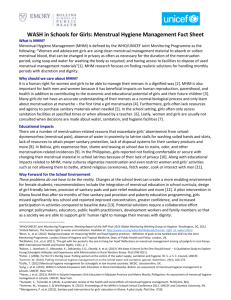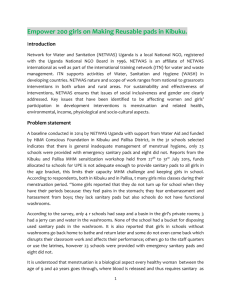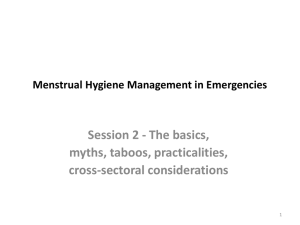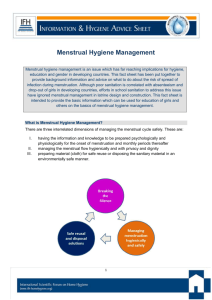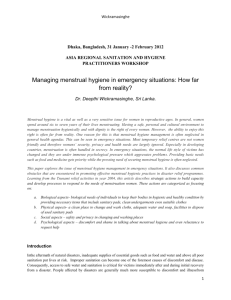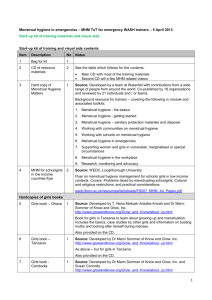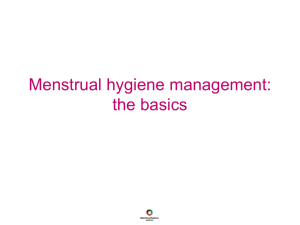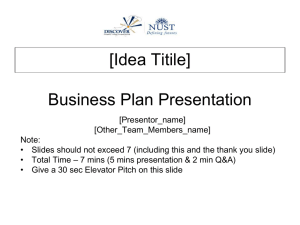Example session plan
advertisement
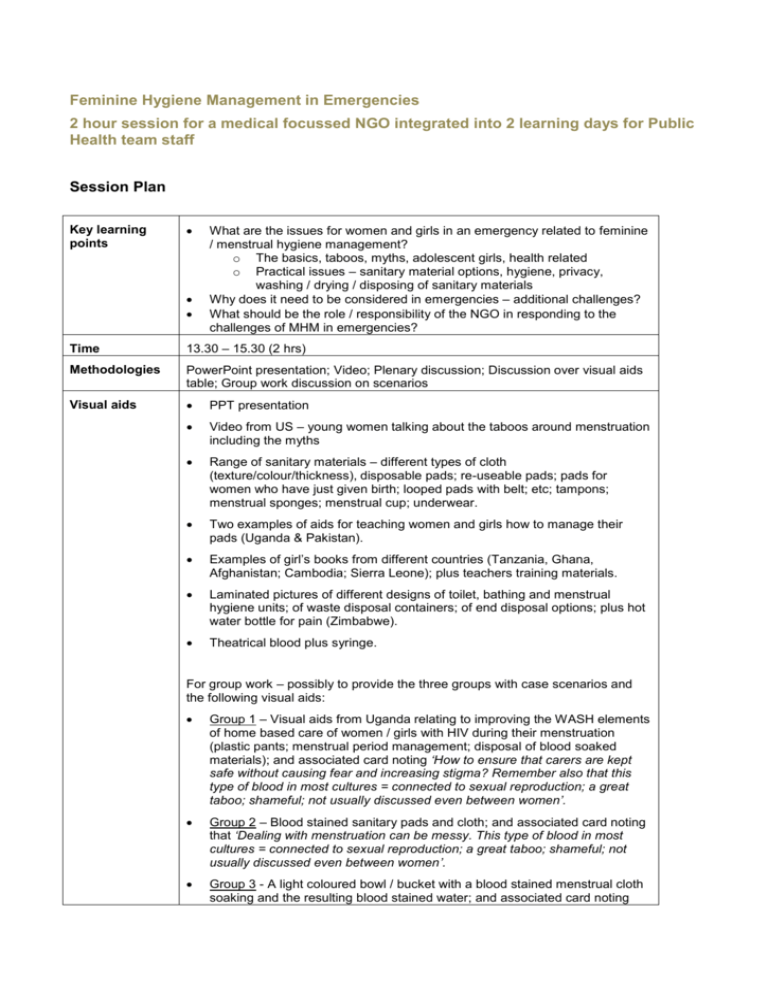
Feminine Hygiene Management in Emergencies 2 hour session for a medical focussed NGO integrated into 2 learning days for Public Health team staff Session Plan Key learning points What are the issues for women and girls in an emergency related to feminine / menstrual hygiene management? o The basics, taboos, myths, adolescent girls, health related o Practical issues – sanitary material options, hygiene, privacy, washing / drying / disposing of sanitary materials Why does it need to be considered in emergencies – additional challenges? What should be the role / responsibility of the NGO in responding to the challenges of MHM in emergencies? Time 13.30 – 15.30 (2 hrs) Methodologies PowerPoint presentation; Video; Plenary discussion; Discussion over visual aids table; Group work discussion on scenarios Visual aids PPT presentation Video from US – young women talking about the taboos around menstruation including the myths Range of sanitary materials – different types of cloth (texture/colour/thickness), disposable pads; re-useable pads; pads for women who have just given birth; looped pads with belt; etc; tampons; menstrual sponges; menstrual cup; underwear. Two examples of aids for teaching women and girls how to manage their pads (Uganda & Pakistan). Examples of girl’s books from different countries (Tanzania, Ghana, Afghanistan; Cambodia; Sierra Leone); plus teachers training materials. Laminated pictures of different designs of toilet, bathing and menstrual hygiene units; of waste disposal containers; of end disposal options; plus hot water bottle for pain (Zimbabwe). Theatrical blood plus syringe. For group work – possibly to provide the three groups with case scenarios and the following visual aids: Group 1 – Visual aids from Uganda relating to improving the WASH elements of home based care of women / girls with HIV during their menstruation (plastic pants; menstrual period management; disposal of blood soaked materials); and associated card noting ‘How to ensure that carers are kept safe without causing fear and increasing stigma? Remember also that this type of blood in most cultures = connected to sexual reproduction; a great taboo; shameful; not usually discussed even between women’. Group 2 – Blood stained sanitary pads and cloth; and associated card noting that ‘Dealing with menstruation can be messy. This type of blood in most cultures = connected to sexual reproduction; a great taboo; shameful; not usually discussed even between women’. Group 3 - A light coloured bowl / bucket with a blood stained menstrual cloth soaking and the resulting blood stained water; and associated card noting ‘Consider the practicalities – to clean a blood stained cloth its best to first soak it in cold water. This type of blood in most cultures = connected to sexual reproduction; a great taboo; shameful; not usually discussed even between women’ Session plan 5 mins Introductions of participants and facilitators Introduction to the session – in 3 parts 40 mins Presentation on key issues (30 mins): o Physiology o Practicalities? o Myths / taboos o Implications for women and girls in emergencies o Health and MHM and menstruation o Why important to consider MHM in emergencies o Importance of consultation o Sanitary protection materials o Drying and storing o Privacy and WASH facilities o Accessibility o Disposal o MHM guidance o Boys and men o Training staff / building confidence o Menstrual hygiene matters resource During the presentation to show some parts of the US video to highlight the taboo nature of the subject plus the myths (10 mins) 30 mins Chance to look at and touch the various sanitary protection materials, books and other visual aids and to discuss as a group 25 mins Group work on the three case scenarios: o MHM in health facilities o MHM and HIV and home based care o MHM in IDP camp context Each with specific questions including one questioning if the organisation has any responsibility to consider MHM in this context? 20 mins Other notes Feedback and discussion
